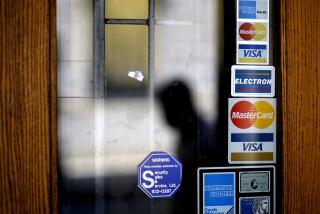Tuition may rise sharply, experts warn
A report released Wednesday by the College Board showed that the average price of attending college rose nearly 6% this fall, but education officials warned that the widening economic crisis might push tuition bills sharply higher next year.
Annual tuition, fees, and room and board for in-state students at four-year public colleges and universities nationwide grew 5.7% for the current academic year to $14,333, according to the College Board’s annual college pricing survey. For four-year private schools, the price of attending rose 5.6% to $34,132. Financial aid reduced schooling expenses for eligible students.
The increases closely matched the 5.6% overall inflation rate for the fiscal year ending July 2008 and were relatively moderate compared with a run-up of college costs a decade ago.
“This is certainly not high by historical standards,” said Sandy Baum, a College Board policy analyst and economics professor at Skidmore College in New York.
But trouble might be looming. State budget cuts, college endowments hit hard by the tumbling stock market and an expected slide in donations could lead to higher charges for students and parents next year, some officials warn. However, some experts speculate that schools may be loath to raise prices at a time when many American families face layoffs, home foreclosures and shrinking investments.
Molly Corbett Broad, president of the American Council on Education, said she was worried about the possibility of steep tuition hikes at both private and public colleges.
“I am afraid this year’s [College Board] report may prove only to be a snapshot of a time in history that we might soon be referring to as ‘the good old days,’ ” she said in a prepared statement. Given the economic strains and endowment losses, college administrators “will be reluctant to increase tuition, but they will likely have little choice.”
Baum of the College Board said she could not make predictions but conceded that campuses were feeling financial strains. “Obviously, the pressure is going to be very strong on colleges and universities, as it is going to be on the rest of the economy,” she told reporters Wednesday during a telephone news conference.
At the National Assn. of Independent Colleges and Universities, spokesman Tony Pals pointed out that one school, Benedictine University in Illinois, recently froze tuition fees through spring 2010 and guaranteed that next year’s freshman class would see no increases through 2011 because of the financial problems many families are facing. Some other private schools may follow that example, Pals said, and others will work to limit hikes.
Still, average tuition increases probably will be larger next year, Pals said. “But whether they will be significantly higher is too early to predict,” he added.
According to the College Board report, students at California’s community colleges and Cal State campuses are getting a good deal compared with students in other states. This year, annual tuition and fees at public two-year colleges nationwide averaged $2,402, compared with $634 at California community colleges.
Excluding room and board, tuition and fees at four-year public schools averaged $6,585 , compared with $3,800 at Cal State campuses. Annual UC fees are more than $8,000, not including living costs, but UC says its fees are similar to those of other highly ranked, research-oriented public universities.
However, with the state budget billions of dollars in the red, officials of California’s public universities are girding themselves for possible fee hikes next year, although they say it is too soon to speak of specifics before next month’s meetings of Cal State trustees and UC regents.
Many other state campuses face similar situations, according to the National Assn. of State Universities and Land-Grant Colleges. Since state budgets and tax revenues are down, “universities will be pressed to increase tuition,” said Peter McPherson, the association’s president.
Full-time students at public four-year institutions received grants and tax benefits averaging $3,700, and full-timers at private four-year schools received grants and rebates averaging $10,200, the College Board report said.
American undergraduates received an average of $8,896 in financial aid this year, including $4,656 in grants and $3,650 in federal loans.
The debt level worries educators and families. About 60% of all students who graduated in 2007 had some school loans to pay off, and the average total debt was $18,800 at public colleges and $23,800 at private schools. That average debt was 18% higher than it was six years ago, the study found.
Turmoil in the banking industry and the increased amounts of money that students can now borrow in federally guaranteed loans are discouraging students from taking out private loans, College Board officials said. Private-loan volume fell slightly between the 2006-07 and 2007-08 school years, while federal-loan volume rose about 6% after inflation, the officials said. The study did not include the most current figures, although experts said they expected to see that trend grow stronger.
--
More to Read
Sign up for Essential California
The most important California stories and recommendations in your inbox every morning.
You may occasionally receive promotional content from the Los Angeles Times.











